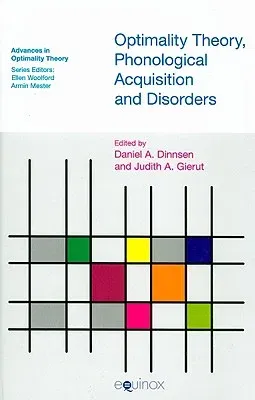Optimality Theory, Phonological Acquisition and DisordersHardcover, 1 November 2007

Qty
1
Turbo
Ships in 2 - 3 days
In Stock
Free Delivery
Cash on Delivery
15 Days
Free Returns
Secure Checkout

Part of Series
Advances in Optimality Theory
Print Length
516 pages
Language
English
Publisher
Equinox Publishing (UK)
Date Published
1 Nov 2007
ISBN-10
1845531205
ISBN-13
9781845531201
Description
Product Details
Book Format:
Hardcover
Country of Origin:
GB
Date Published:
1 November 2007
Dimensions:
23.62 x
15.24 x
3.3 cm
ISBN-10:
1845531205
ISBN-13:
9781845531201
Language:
English
Location:
Sheffield
Pages:
516
Publisher:
Weight:
884.5 gm